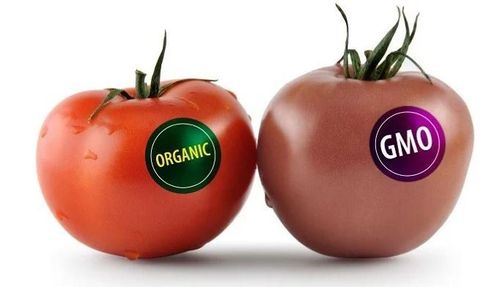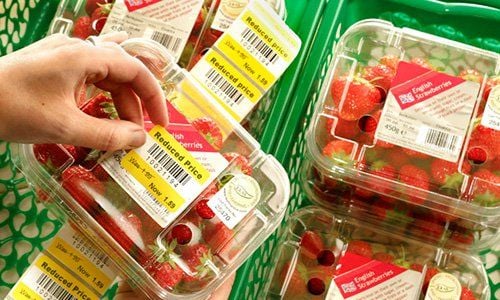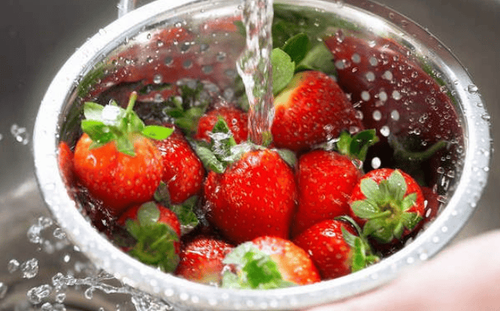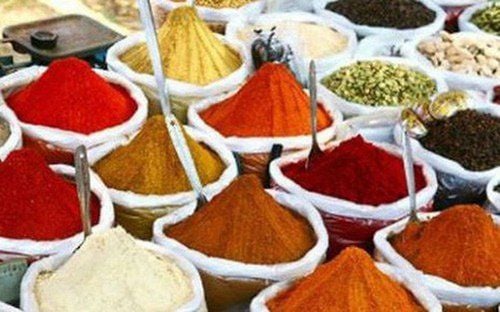This is an automatically translated article.
Food-specific information (e.g. food name, weight or volume, ingredients, date and storage conditions, ...) must appear on food labels by law, although there is one number of exceptions. This information will help consumers choose good food and have high economic efficiency.
1. Food labels
Information provided on the packaging of food products to help consumers choose between different foods, brands and flavors. The European Food Information Regulation (FIR) is in force and applies to all member states. The new regulation is intended to bring together current general nutrition and food labeling laws and to update recent developments in food information. It has also simplified certain aspects to improve clarity. As a result, consumer understanding is also improved and enhanced.
2. Food labeling guidelines
2.1. The name of the food or drink The name of the food must be clearly marked on the packaging. Some foods have their own names, and food labels do not provide information about their ingredients or how they are prepared, a detailed description of the food must be provided that is not ambiguous and not misleading. . If the food has been prepared in some way, that process should be stated in the name of the food, for example dried apricots, salted peanuts or smoked mackerel. The name should also describe the difference between seemingly similar products. For example, fruit yogurt should be flavored with real fruit, while fruit flavored yogurt can be flavored with artificial flavoring.
2.2. List of ingredients The ingredients list must include all ingredients of the food or beverage including water and additives, although there are some exceptions. Ingredients must be listed in order of weight and quantity used to make the food. The food labeling process begins with the largest ingredient and ends with the smallest ingredient. Ingredient names must be listed in the language appropriate for the country in which the food is sold.
2.3. Genetically Modified (GM) Ingredients The presence in foods of genetically modified organisms (GMOs) or ingredients produced from GMOs must be stated on the label. Foods produced with genetically modified technology (e.g. cheese made with GM enzymes) and products such as meat, milk and eggs from animals raised on genetically modified feed must be labeled.

Tem dán thực phẩm của sinh vật biến đổi gen (GMO)
2.4. Alcohol or caffeinated beverages Alcoholic beverages over 1.2% by volume will have to be labeled according to the actual strength of the alcohol by volume. Drinks with a high caffeine content (more than 150mg/l) will have to be labeled with the amount of caffeine they contain, unless they are made from coffee or tea. This is because beverages that contain a lot of caffeine are not recommended for children or pregnant or nursing women.
2.5. Weight or mass The actual weight or volume of the food or drink must be stated on the label if it is more than 5g or 5ml. The weight or volume doesn't have to be exact but should be at least within a few grams or milliliters. For foods packaged in liquid form, e.g. sweet corn, the weight of the drained food should be displayed. Some foods, such as tea and butter, are sold only in standard quantities. The symbol E is used to show that the weight complies with the EU requirement for weight under the average system, i.e. the average pack is at least the published weight. Comparing the weights and prices of different brands allows consumers to make value-for-money choices between brands.
2.6. Produce, shelf life and storage conditions Most foods should be marked with a best-before-use or use-by date to know how long the product is likely to last after purchase. and/or open. The use-by date is used for foods that are very perishable, e.g. milk, meat, fish and therefore are not safe to eat after this date even though they may not taste any different. Other foods have a best date, after which the food may not be at its best in terms of taste, color, and texture. However, they are likely to be safe to eat as long as they have been stored according to label directions. Storage instructions must be included to ensure freshness. Following storage and handling instructions will help prevent food from spoiling too quickly, reduce the risk of food poisoning, and ensure that food looks its best when eaten. Other tutorials on caching methods have become popular. For example, a simple star system is used to indicate what temperature food should be kept and for how long:
-6 °C for 1 week (pre-frozen food only) -12° C for 1 month (pre-frozen foods only) -18 °C for 3 months (pre-frozen foods only) -18 °C or colder for 6 months (pre-frozen foods; can also be used for freezing fresh food from room temperature) 2.7. Instructions for preparation and storage When necessary, instructions should be given on the product label on how to prepare and cook the food. If the food must be heated, the oven temperature and cooking time should usually be stated. Instructions can also be provided for heating in the microwave. These guidelines should ensure the food tastes its best and that it will be thoroughly heated to a core temperature of 75°C, helping to reduce the risk of food poisoning.

Trên nhãn sản phẩm có thể có thông tin hướng dẫn cách chế biến và nấu chín thực phẩm
2.8. Name and address of the manufacturer The contact details of the food manufacturer responsible for the information on the label should be clearly stated. This gives consumers the opportunity to contact the manufacturer if they have a complaint about the product or if they want to know more about the product.
2.9. Country of origin The label must clearly show where the food comes from otherwise it would be misleading, for example: Greek yogurt made in France. This includes fresh meat and frozen meat. The origin of the key ingredients must be provided if this differs from the place of manufacture of the final product.
2.10. Batch or lot number manufactured This is not part of the labeling requirements but is required under UK law. A batch or lot number is a code that can identify lots of food in the event of a recall by the manufacturer, packer or producer. The date stamp is sometimes used as a batch mark, or the batch mark may be indicated by the letter L.
2.13. Allergen Information Contains 14 food ingredients: milk, eggs, peanuts, tree nuts (including Brazil nuts, hazelnuts, almonds and walnuts), fish, molluscs (such as mussels and oysters), crustaceans (including crabs and shrimp), soybeans, gluten-containing grains (wheat, barley, rye and oats), lupine, celery, mustard, seeds Sesame, sulfur dioxide, and sulphites should always be clearly labeled as they are known to cause allergies and intolerances in some people. According to European regulations these ingredients or foods must be declared in the ingredients list and marked in a way that makes it stand out.
2.12. Other Information Other information that may appear but is not required includes: recipes and cooking instructions on product labels. Product images used as part of a dish or set meal are considered serving suggestions. This is to indicate that this is not how the product will look when the packaging is removed.
Please dial HOTLINE for more information or register for an appointment HERE. Download MyVinmec app to make appointments faster and to manage your bookings easily.
Reference source: nutrition.org.uk












